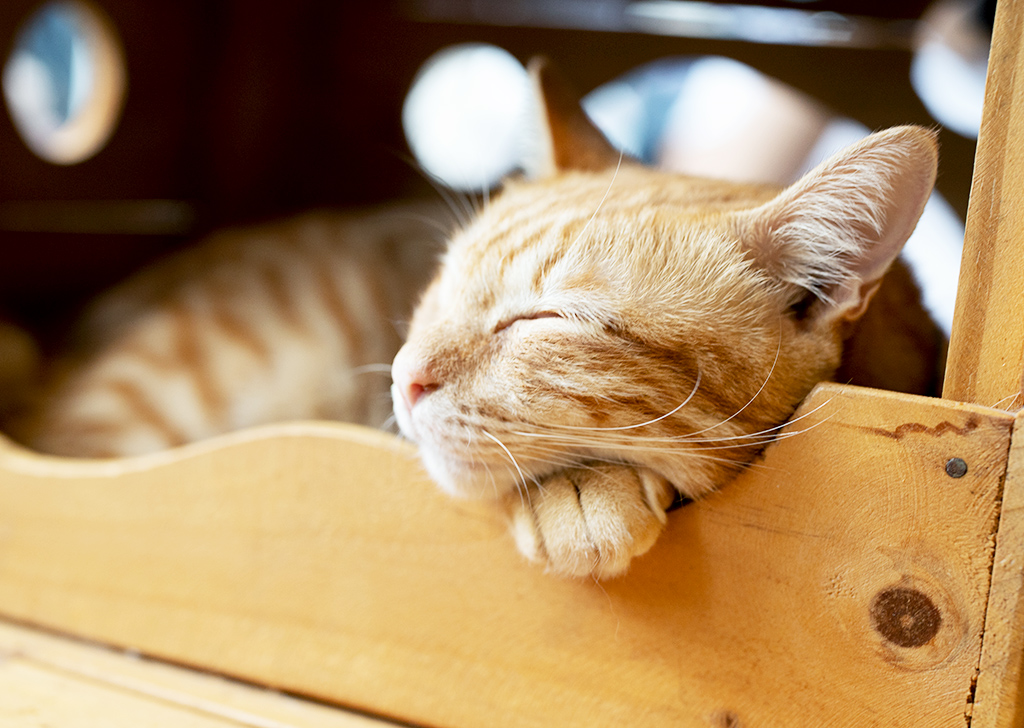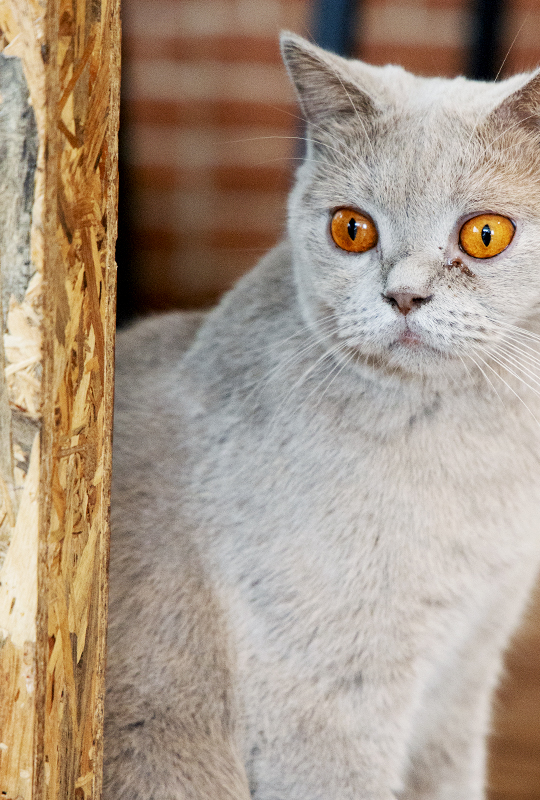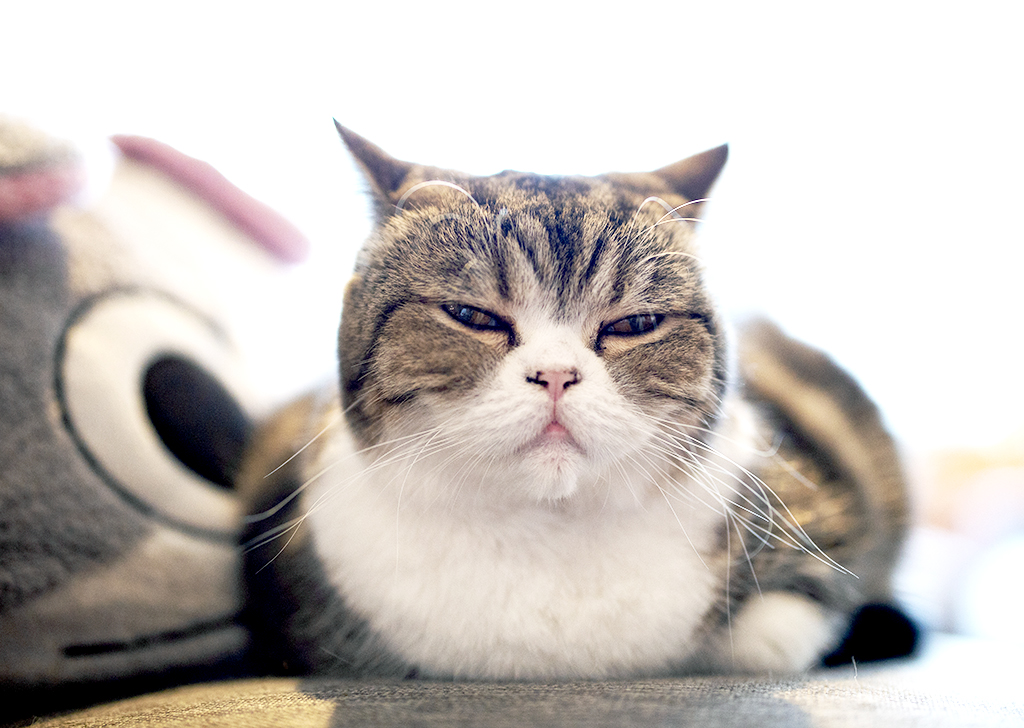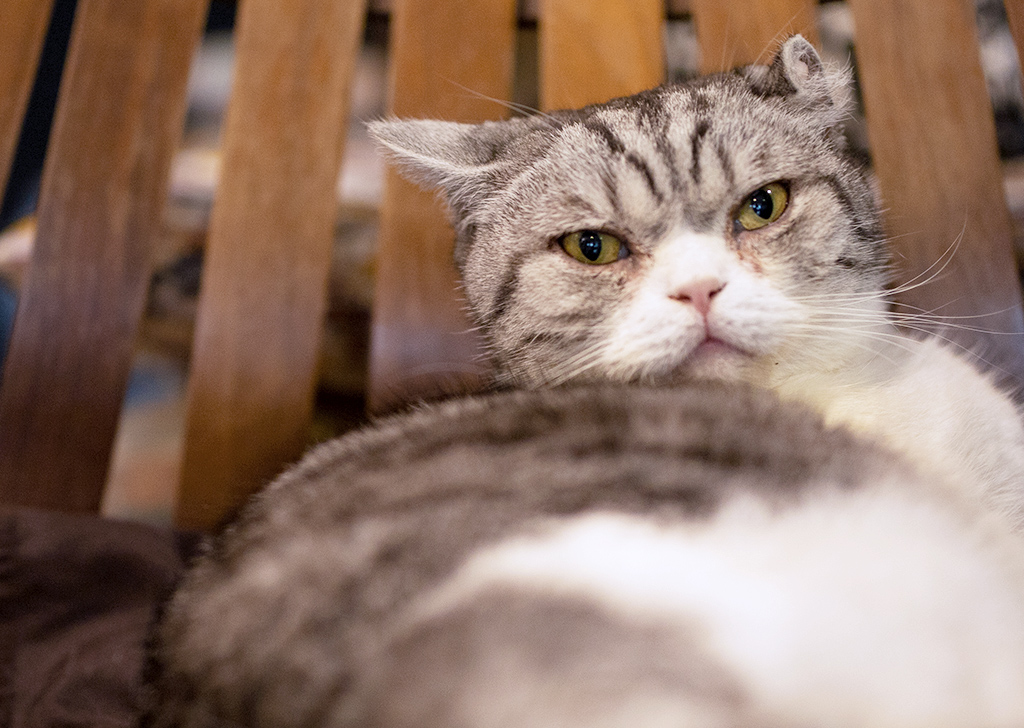If you are a new cat owner, it is understandable that you would want to proudly showcase your newest family member to the world (just like the friend with a newborn baby whose Facebook is now a baby photo gallery). There are many ways to photograph a pet, but let’s not be one of those who lacks the skill to curate. Here are five tips to help you start on pet photography.

EOS RP, RF50mm f/1.2 L USM lens, f/3.2, 50mm, 1/100sec, ISO1000
It’s the eyes that matter

EOS RP, RF 24-105mm f/4L IS USM lens, f/4.5, 105mm, 1/250sec, ISO5000
Just like a human portrait, we want to capture the eyes of our subject. For cats, it is way more interesting: their eyes can be slit-shaped, alluring almond or full round eyes, and all of that depends on the light at the time of the day. Also, the different sizes of the pupils are determined by the mood of the cat, for example, narrow slits could suggest arousal (anger, pleasure, etc.), while wide pupils could mean excitement or fear.
Understanding this will help you capture the various emotions of your cats, allowing you to tell a better story through photography. For this, Servo AF is useful in ensuring the focus is always on your pet. Although Eye Detection AF does not work for animal eyes, methods like Zone AF work well to keep the focus.
Go for the details

EOS RP, RF50mm f/1.2 L USM lens, f/2.8, 50mm, 1/125sec, ISO320
As the saying goes, the devil is in the details. Take a close-up shot of tiny whiskers, their little paws, get a shot of the cat’s bushy tail, or get those furry ears. These are intriguing angles to capture instead of simply filling the frame with the entire animal.
No macro mode? No problem. If you’re looking to get a tighter shot straight out of camera, consider switching the in-camera crop mode to 1.6x before shooting. Thanks to the high megapixel count, you can still retain sufficient detail in your pet’s photo even with a closer crop.
Get to their level

EOS RP, RF50mm f/1.2 L USM lens, f/1.4, 50mm, 1/160sec, ISO1250
One of the fundamentals in pet photography is to get to the same level as the pet when photographing them. This allows you to not only be closer to your pet but also to see the world through their eyes. Hence, a lower angle makes it possible to capture a lot more hidden quirks and emotions from your pet.
With the Vari-angle LCD touchscreen, you wouldn’t need to straight yourself trying to shoot at low angles. The fully articulated screen allows you to focus and shoot at a touch of a finger, allowing you to focus more on exploring unique angles in both vertical and horizontal orientation—making this convenience unrivalled.
Toys and food as bait

EOS RP, RF50mm f/1.2 L USM lens, f/1.2, 50mm, 1/60sec, ISO1000
Photographing cats is tricky business. Unlike dogs, they don’t react to their names, making it much harder to get their attention for a shot. However, having treats or toys on your hands would certainly help! Place the treat on top of your camera so it would look like the cat is looking straight into the lens. In this way, you get a shot where the animal is looking at you with undivided attention. Don’t forget to give the cat the treat when you are done! As for the toy, it would be interesting to capture a shot of the cat in action – playing, kicking or chewing the toy.
Learn about aperture

EOS RP, RF50mm f/1.2 L USM lens, f/3.2, 50mm, 1/400sec, ISO800
Aperture is important when it comes to pet photography, as it controls the depth your photo presents and in turn, the focus of your photo.
When shooting in a room with plenty of natural light, adjust the setting to a wider aperture (e.g. f/2.0, depending on the lens you shoot with) to get a shot with a shallow depth of field. This isolates your subject from the background, which makes a beautiful pet portrait.
If you want to give context to your shot, adjust the aperture setting to a higher f-stop (e.g. f/8) to help show more of your surroundings. Alternatively, you can pull back the surrounding by zooming out, which gives your background a deeper depth of field without having to push to a higher f-stop.
There is no hard and fast rule when it comes to setting the ideal f-stop, experiment with different levels to get the shot you are most pleased with, and that you feel showcases your pet the best.
To learn more about pet photography, read the following articles:
5 ways to shoot intimate photos of your pet with Canon EOS R
3 Ideas for Cute Cat Photos
Tips to Increase Engagement on Your Pet’s Instagram
6 Ways to Create an Instagram-Worthy Account for Your Pet
Shooting Unpredictable Subjects - Pets
Receive the latest update on photography news, tips and tricks.
Be part of the SNAPSHOT Community.
Sign Up Now!
































.jpg)


